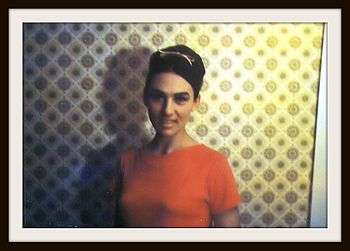1960s decor


1960s décor refers to a distinct style of interior design which became prominent in the 1960s and early 1970s. Dark greens, yellows, pinks, and orange hues (such as pea green, drab, peach, and saffron) were very popular for wallpaper, carpets, curtains, sofas, chair seats and cushions, often with patterns or bright flowers. English designer David Hicks was an important influence on interior design in the 1960s inspired by bright colours associated with India.[1] Hicks was influential in designs "with psychedelic patterns and acid-edged colors" which became extremely common in the period 1967-1973 especially.[1] The psychedelic designs came at a time when the hippy movement and "flower power" was at its height. At the same time, Dorothy Draper, Manhattan's top interior designer in the 1960s, used 'dull' white and 'shiny' black as one of her favorite combinations.[2]
The "Retro Modern" style is associated with the decades of the 1950s and 1960s.[3] As a furniture material, polypropylene, whose color could be matched to paint chips, came into its own during the 1960s. Foam molding, mostly used as upholstery cushions, became a basic structural unit for furniture in the early 1960s.[4] In the 1960s, large areas, such as sofas, beds, carpets, drapes and wallcovers, were covered in vibrant colors. Employing "psychedelic intensity", the colors and styles were influenced by India, Spain, and the Mediterranean.[3]
Many hotels and restaurants retain their décor from the 1960s or specifically employ sixties style features to give them a more nostalgic sensibility.[5][6][7] Pink or orange paintwork or bedspreads and curtains which were fashionable in the 1960s, however, are often considered to be "hideous" or "painful" today and unappealing to many.[8][9] As Paul Evans put it, "For many the popular image of 1960s home design was of ephemerality and excess, of plastic or paper chairs and lurid carpets and wallpaper."[10] 1960s television series such as The Avengers, Batman, The Man from U.N.C.L.E, Bewitched, The Saint, and Randall and Hopkirk (Deceased) provide fine examples of the type of décor popular during this period and are an important aspect of the look of the productions; for the latter orange hues are even used in the title design.
References
- 1 2 Old House Interiors. Home Buyer Publications. Jan–Feb 2009. p. 64. ISSN 1079-3941. Retrieved 7 August 2012.
- ↑ Vargas-Cooper, Natasha (1 August 2010). Mad Men Unbuttoned: A Romp Through 1960s America. HarperCollins. pp. 137–. ISBN 978-0-06-199100-4. Retrieved 9 August 2012.
- 1 2 Nielson, Karla J. (10 July 2007). Interior Textiles: Fabrics, Application, and Historic Style. John Wiley & Sons. pp. 438, 443–. ISBN 978-0-471-60640-6. Retrieved 9 August 2012.
- ↑ Fehrman, Cherie; Fehrman, Kenneth R. (1 October 2009). Interior Design Innovators 1910-1960. Fehrman Books. pp. 118–. ISBN 978-0-9842001-0-8. Retrieved 9 August 2012.
- ↑ Bain, Keith; Reid Bramblett; Bruyn, Pippa de (7 August 2006). Pauline Frommer's Italy. John Wiley & Sons. p. 557. ISBN 978-0-471-77860-8. Retrieved 7 August 2012.
- ↑ Bainbridge, James (1 April 2009). Turkey. Lonely Planet. p. 191. ISBN 978-1-74104-927-5. Retrieved 7 August 2012.
- ↑ Fitzpatrick, Mary (1 May 2010). Mozambique. Lonely Planet. p. 67. ISBN 978-1-74104-888-9. Retrieved 7 August 2012.
- ↑ Ward, Greg (1 August 2003). Brittany and Normandy. Rough Guides. pp. 71–=. ISBN 978-1-84353-076-3. Retrieved 7 August 2012.
- ↑ Palmerlee, Danny; Grosberg, Michael; McCarthy, Carolyn (30 November 2006). Ecuador & the Galápagos Islands. Lonely Planet. p. 184. ISBN 978-1-74104-295-5. Retrieved 7 August 2012.
- ↑ Evans, Paul (23 August 2011). The 1960s Home. Osprey Publishing. p. 64. ISBN 978-0-7478-1159-6. Retrieved 7 August 2012.